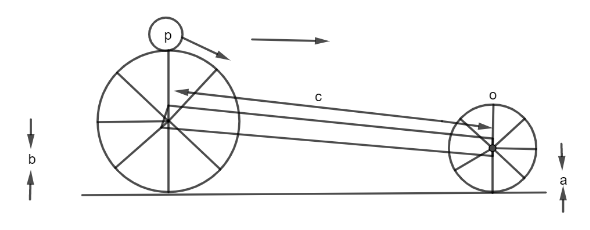Question
Question: The radius of the front wheel of the arrangement shown in figure is \[a\] and that of the rear wheel...
The radius of the front wheel of the arrangement shown in figure is a and that of the rear wheel is b . If a dust particle driven from a highest point of rear wheel alights on the highest point of front wheel, the velocity of arrangement is:

A. [gc+a−b(b−a)(c−a+b)]21
B. 4(b−a)g(c+a+b)
C. [g4(b−a)(c+a−b)(c−a+b)]21
D. [4(c−a)g(c−a+b)]21
Solution
In order to solve this problem first we will find the horizontal distance between their centers, after that we will find the horizontal distance travelled by the wheel in time t. Then we will equate both the equations in order to find the value of the term t and at last we will substitute the value of t inorder to get the required velocity of arrangement.
Complete step by step answer:
Let t be time of flight of the particle from P to Q .Since C is the distance between the centres of the two wheels,
ch=c2−(b−a)2
If v is the velocity of the carriage, then ch=vt (horizontal range).
vt=c2−(b−a)2
⇒t=v1c2−(b−a)2
In this time, the particle has covered the vertical distance =2b−2a.
(The vertical distance between the highest points of both the wheels)
